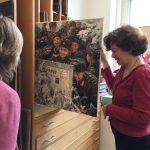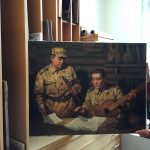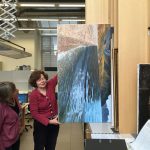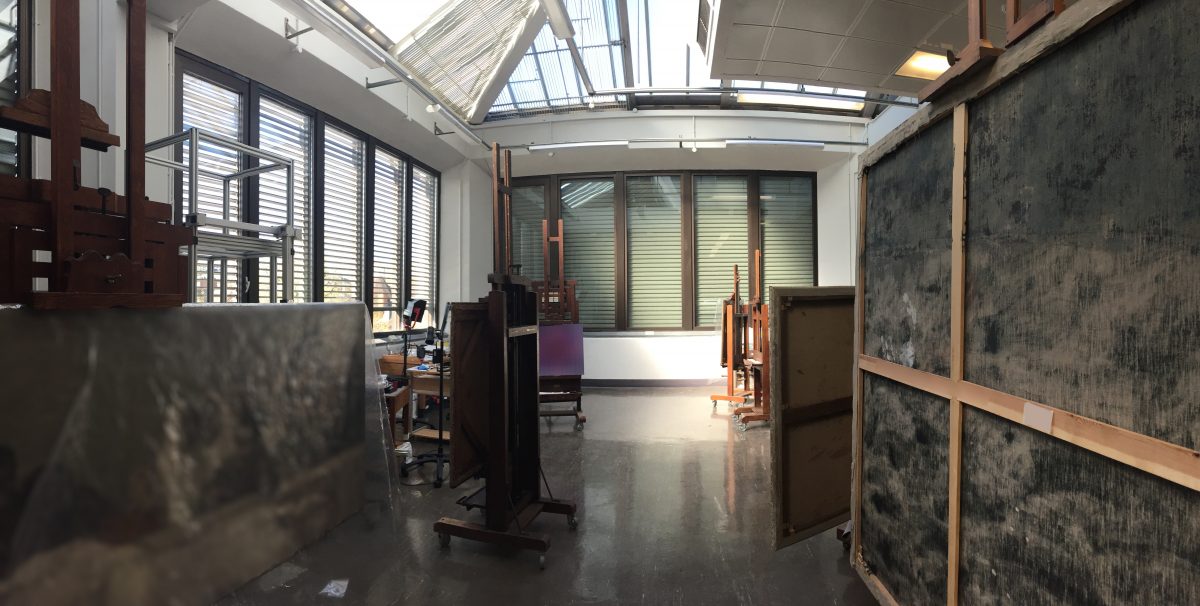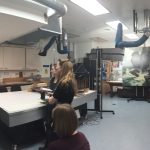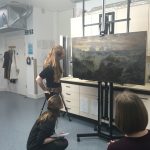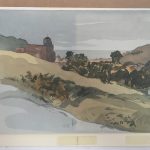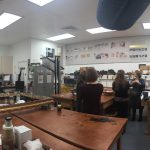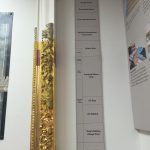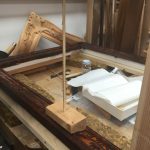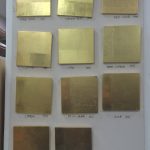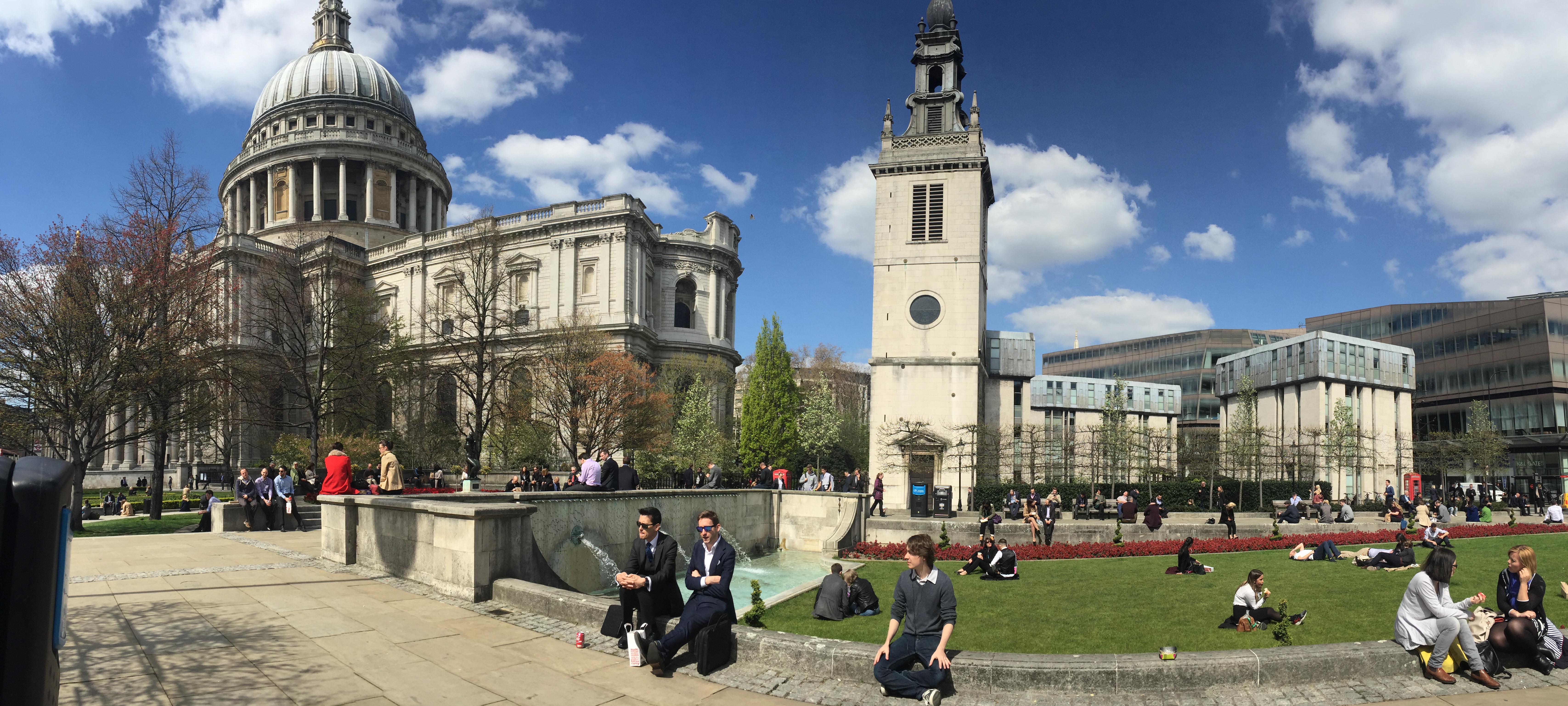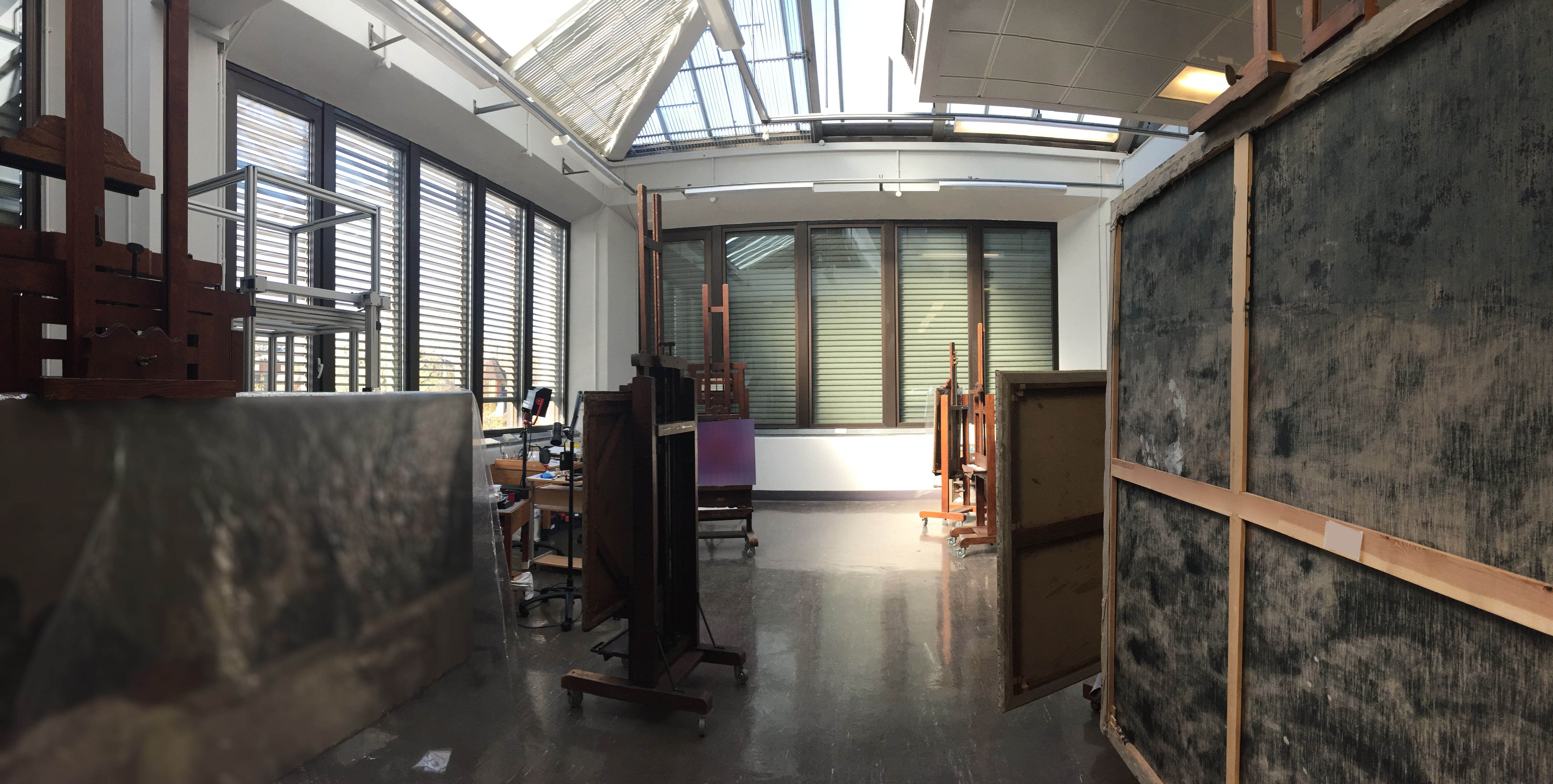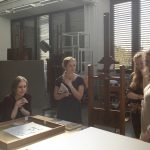The Victoria and Albert Museum attracts millions of visitors through its doors, but very few are afforded the chance to venture behind the scenes. Therefore, we felt very privileged to visit the V&A’s Painting Conservation Department on our recent trip to London, especially with Head Painting Conservator, Nicola Costaras, as our guide.

Ranging from its well-known Old Master and Victorian paintings, to a growing number of contemporary works, the V&A has some 2000 paintings in its collection. Their preservation is a multi-faceted and demanding task. Aside from performing practical treatments and implementing preventative conservation strategies, the Painting Conservation Department carries out scholarly research into the collection and shares it through a number of platforms, be it in person, print or online through the V&A’s blog. In addition to caring for the V&A’s permanent collection, the department also takes responsibility for the many paintings which arrive as part of temporary exhibitions and displays. This is no mean feat, especially considering it is all achieved with only one permanent staff member, conservators hired for particular projects, and student placements, a fact which left us all the more impressed by the work we saw.

As we walked through the studio Nicola showed us several paintings and discussed with us their diverse problems and the appropriate solutions that were fashioned to overcome them.
The paintings themselves were representative of the V&A’s scope and influence.
One of the first pieces we saw was a Constable oil sketch, one of ninety-two owned by the V&A. Hearing about these sketches exemplified the ever-growing role conservators play in understanding and sharing the physical art history locked within paintings. Through their various conservation treatments, these sketches have revealed Constable’s unique and thrifty use of materials. Sometimes he painted on both sides of his supports, which were themselves often cobbled together out of whatever materials he had close to hand. The sketch we saw had been mounted on paper then lined, by Constable, onto canvas. It was interesting to learn that many of his oil sketches were posthumously lined with canvas, deliberately recasting sketches intended as impressions into final works to bolster their desirability and sale value.
Nicola also pulled out three recently acquired (2009) North Korean paintings for us to contemplate. While their subject-matter, which extols the state’s leaders and military, did not come as any surprise, the Western, particularly Impressionist, style of the paintings did. Their presence in the collection grants a rare insight into the artistic output of a country shrouded in mystery, underlining the V&A’s continued role in bringing the art of far-flung parts of the world to a wider audience and to the attention of the British public.
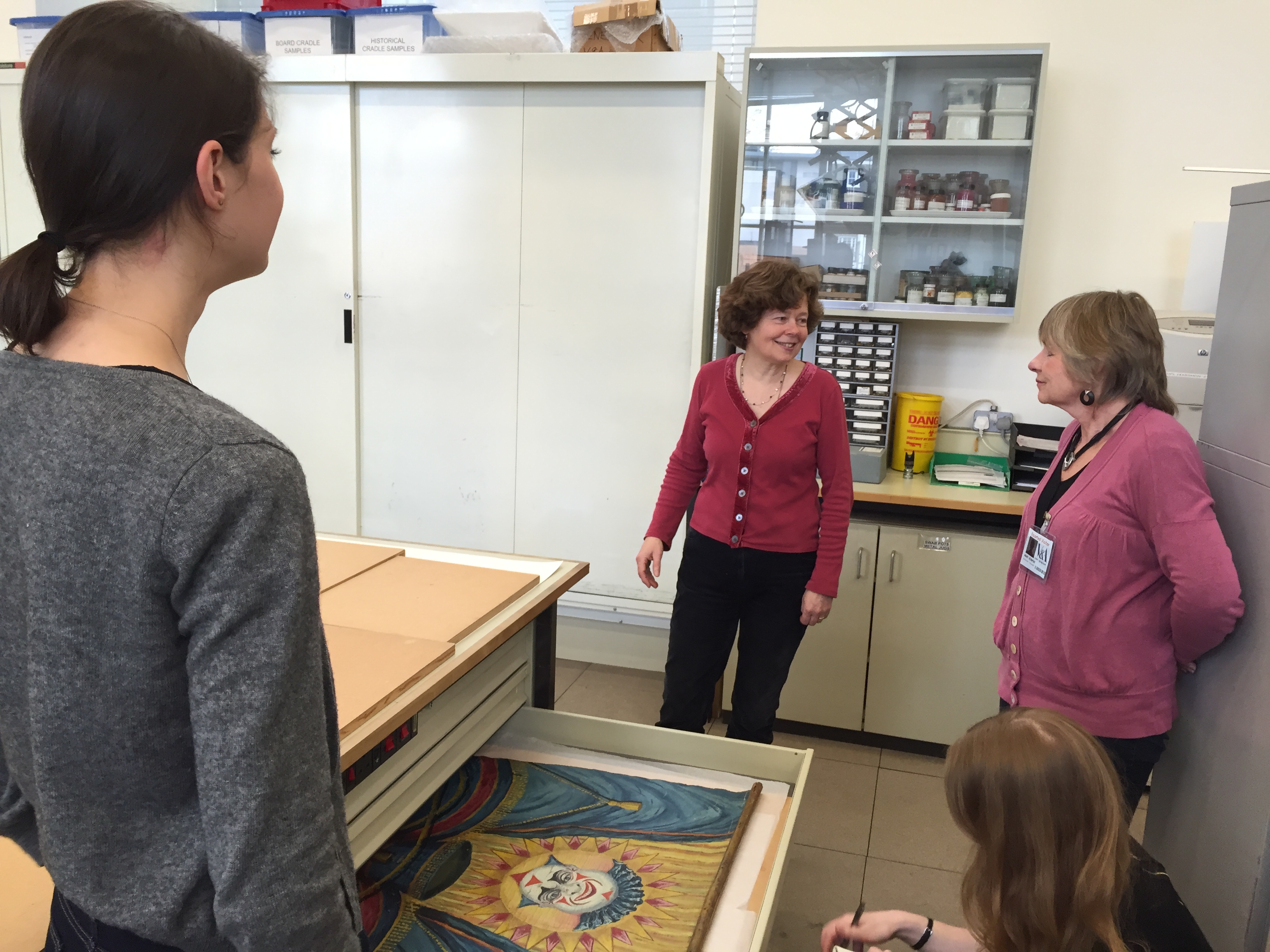
Going around the studio, one was struck not only by the geographical breadth of the collection, but by the variety of materials on which the paintings were executed. Nicola neatly illustrated this by opening a plan-chest drawer to reveal a painted backdrop curtain from a marionette-theatre and an early 17th century oil painting on marble, mounted on slate, which depicted the baptism of Christ. The latter was especially attractive, as the artist had incorporated the natural patterns of the marble into the composition, with the veining forming a celestial kingdom populated by angels and cherubim.
The V&A is an active and enterprising global organisation. Consequently, preparation for loans and exhibitions forms a core component of the department’s workload. We were fortunate for our visit to coincide with the exhibition Botticelli Reimagined and see the fruits of their labours in the form of Botticelli’s Portrait of a Lady known as Smeralda Bandinelli, c.1470-5, which was restored especially for the exhibition. Nicola kindly armed us with the infrared and before and during treatment images, allowing us to visually trace its evolution from Botticelli’s initial sketched design to its current state via the twisted byroads of vandalism (her right eye and mouth were scored by an unknown hand) and historic restorations (including those done by the artist, and previous owner of the painting, Dante Gabriel Rossetti).
It was a pleasure visiting the department and hearing about the complexities and nuances of the V&A’s collection from the perspective of its conservators. Our sincere thanks to Nicola Costaras for being so informative and generous with her time. We look forward to hearing her and Clare Richardson’s talk ‘Botticelli’s Portrait known as Smeralda Bandinelli; a technical study’ at the V&A’s forthcoming international two-day conference ‘Botticelli: Past and Present’.
Amiel Clarke, 2nd year Student at the Hamilton Kerr Institute

About the author
Amiel Clarke is in her second year of studies at the Hamilton Kerr Institute, where she is working towards attaining a Post-graduate Diploma in the Conservation of Easel Paintings. She graduated with an MA in History of Art from the University of Edinburgh in 2012. During her studies she has undertaken placements at the Glasgow Museums Resource Centre and the HKI’s Ebury Street studio.
To contact Amiel Clarke: amielejclarke@gmail.com

